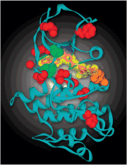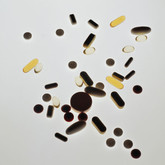Generics/Research
Portugal increases use of generics for treatment of cardiovascular diseases
In Portugal, the use of medicines for cardiovascular system increased nearly two-fold between 2000 and 2010. As such, over a quarter of the overall expenditure on medicines during these years went towards the treatment of cardiovascular issues [1]. However, it is possible that there may be room for cost saving on these medicines through increased uptake of generic and essential medicines. A recent study by Gama et al. has outlined the trends in outpatient cardiovascular medicine use in Portugal between 2004 and 2012, with focus on the uptake of generic and essential medicines [2].
Pharmaceuticals and products liability litigation
In 2016, healthcare spending represented 17.9% of the economy of the US, a slight increase from 2015. By 2016, the average consumer in the US expended US$1,100 per capita on prescription drugs. Authors Katie McCarthy and Richard Hunter discuss the interconnections between the different types of product liability claims related to marketing and manufacturing of drugs in the pharmaceutical industry, rising drug costs, the increasing availability of generics in the marketplace. They also discuss several major cases and the outcomes of those cases as they relate to the social responsibility of drug manufacturers [1].
Portugal saves money with increased use of cardiovascular generics
Cardiovascular diseases are the primary cause of mortality worldwide [1-3], accounting for over 30% of all deaths. However, in the last few decades, the number of deaths attributed to cardiovascular diseases in higher-income countries has been on the decline. This is thought to be largely due to improved and increased healthcare interventions, according to Gama et al. [4].
Barriers to HIV generics in the US
Combination antiretroviral therapy (ART) has dramatically improved survival rates among people with HIV and is a mainstay of HIV prevention. Generic ART medications offer the potential for treating and preventing HIV at a lower cost [1].
Bioequivalence of brand-name and two generic tacrolimus in transplant patients
Although the US Food and Drug Administration’s (FDA) generic drug approval process has a long-term successful track record, concerns remain for approval of narrow therapeutic index generic immunosuppressants, such as tacrolimus, in transplant recipients. Several professional transplant societies and publications have generated scepticism of the generics approval process. Three areas of concern are that the pharmacokinetic properties of generic and brand-name products in healthy volunteers may not reflect those in transplant recipients, bioequivalence between generic and brand-name products may not ensure bioequivalence between generics and high-risk patients may have specific bioequivalence concerns. While this study tests tacrolimus, the novel trial design and results may globally impact regulatory considerations and strategies, not only for the approval of immunosuppressants but also for other narrow therapeutic index/ critical dose drugs.
Adverse outcomes for elderly using generic versus brand-name ARBs
Generics are commercialized once active ingredient’s patent of a brand-name drug expires. Brand-name to generics substitutions are encouraged and favoured due to the considerable savings for both patients and payers. Comparative bioavailability studies ensure pharmacokinetic equivalence between a given brand-name drug and corresponding generics, with similar requirements worldwide. However, no clinical equivalence studies are required before generics commercialization. After commercialization, few studies have assessed outcomes between brand-name and generic drug users in cardiology, especially at a population level.
Persistence with generic imatinib in CML patients
A study carried out by researchers from Canada investigated the clinically comparability of brand-name and generic imatinib in patients treated for chronic myeloid leukaemia (CML) [1].
Efficacy and safety of generic imatinib after switching
A study carried out by researchers from the US investigated switching from originator to generic imatinib in patients treated for chronic myeloid leukaemia [1].
Approval rating and opinion on generic drugs in Italy: a cross-sectional study in the Liguria region
Italy has the lowest generics market share by volume in Europe (less than 20%), coming just below Portugal and Spain. While in Northern European countries the introduction of generics took place between the 1970s and 1980s, in Italy the concept of generics was only clarified in 1996 (law n. 425) and physicians were only required to inform patients from 2012 [1].
Interchangeability of gabapentin generics
Researchers from The Netherlands and the US developed a model that could describe pharmacokinetic data for generic gabapentin in order to identify potential subpopulations of individual patients with increased risk for altered pharmacokinetics [1].












